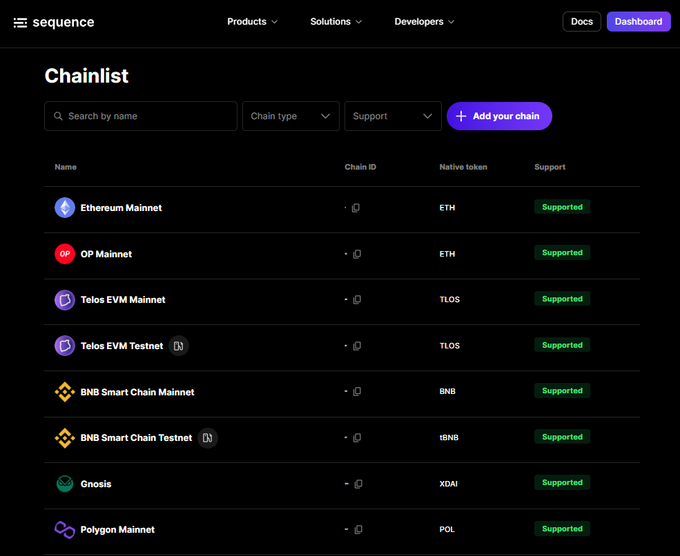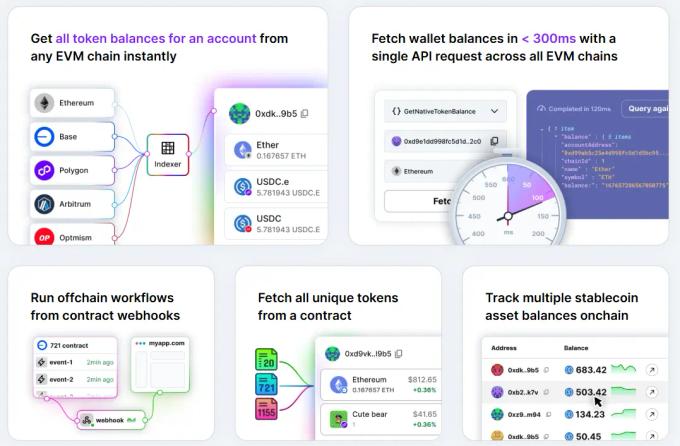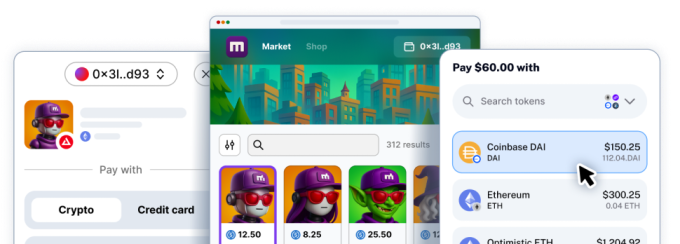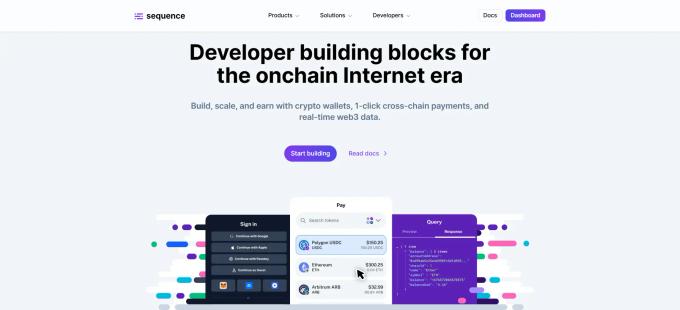What is a web3 stack?
November 6 2025

What exactly is a web3 stack, and how does it differ from traditional architecture?
In this article, we’ll break down this concept, explain its components, and explore how modular tools like Sequence simplify onchain development for any web3 platform, like DeFi protocols, NFT marketplaces, or cross-chain payment apps.
What is a web3 stack and why does it matter?
A web3 stack is the collection of technologies, protocols, and developer tools that enable decentralized applications (web3 apps) to operate on the blockchain.
Just like traditional apps rely on a stack of tools (frontend frameworks, databases, APIs, and cloud hosting), web3 development uses its own stack to manage wallets, smart contracts, token interactions, and blockchain data.
The web3 stack connects users, blockchains, and applications through wallets, smart contracts, and decentralized infrastructure. It empowers developers to:
- Build trustless applications using smart contracts
- Monetize via stablecoins and crypto payments
- Create multi-chain experiences
- Enable gasless, wallet-free onboarding
The foundation: Blockchains
Every web3 platform runs on a blockchain. It can be an EVM-compatible chain such as Ethereum, Polygon, or Base, or alternative environments built with different virtual machines.
Developers often start here, choosing the right foundation based on scalability, fees, and ecosystem. Layer-2 and sidechain technologies are popular because they reduce costs while maintaining the security of Ethereum’s EVM.
This base layer provides:
- Consensus and data immutability
- Native currency and gas mechanism
- Smart contract execution environment
It makes up the foundational layer of the web3 stack, the execution layer that turns code into verifiable onchain actions.
The logic layer: Smart contracts
Smart contracts are the programs that live inside a blockchain. They define how tokens move, how marketplaces function, or how lending protocols manage collateral.
Written in languages like Solidity or Vyper, smart contracts replace servers and API endpoints with decentralized logic that anyone can audit and verify. They are the rules of an onchain economy.
For developers, this layer involves:
- Designing contract architecture
- Deploying on one or multiple EVM chains
- Managing contract upgrades and audits
Smart contracts are also where DeFi, NFTs, and web3 payments begin. They hold the code for staking, minting, and stablecoin transfers.
The access layer: Wallets and identity
In web3, a wallet is a payment tool, but also a user’s identity and key to the network. Instead of usernames and passwords, users connect with web3/crypto wallets like Sequence, MetaMask, or smart contract wallets that support account abstraction.
Account abstraction (ERC-4337) lets developers offer:
- Gasless transactions
- Social logins or email onboarding
- Multi-chain experiences under one identity
The information layer: Data, indexing, and middleware
Blockchains are transparent, but raw onchain data is difficult to read. Middleware tools bridge this gap, allowing applications to query transactions, NFT ownership, and liquidity metrics efficiently.
The indexing layer powers everything from dashboards to explorers. Developers use APIs to filter blockchain data, run analytics, or connect multi-chain information sources. This layer also supports cross-chain and chain-abstraction features, helping developers create unified experiences across ecosystems.
The value layer: Transactions and monetization
One of web3’s strongest advantages is native money on the internet. Stablecoins like USDC and DAI have made crypto payments predictable and accessible. Using web3 payment gateways, apps can handle onchain/crypto checkout, recurring transactions, or subscription models without intermediaries.
Developers can integrate:
- Gasless checkout for smoother UX
- Stablecoin rails for predictable pricing
- Multi-currency digital wallets for global reach
This layer connects DeFi liquidity with real-world utility, making the web3 stack an open financial system as well as a technology framework.
The token layer: Assets and ownership
Digital assets, or NFTs, represent ownership onchain. They can be artwork, identity credentials, or access passes to ecosystems. The web3 stack treats tokens as programmable building blocks that link value to utility.
Modern developers use token standards like:
- ERC-20 for fungible tokens
- ERC-721 and ERC-1155 for NFTs
- Soulbound tokens for non-transferable identity
These standards allow anyone to build markets, rewards systems, and digital economies that interoperate across apps and chains.
The ecosystem layer: Chain abstraction
As web3 matures, users expect experiences that feel chain-agnostic. Chain abstraction hides the complexity of multiple blockchains behind a single interface.
This layer enables:
- Cross-chain interactions without bridging risk
- Unified wallet experiences
- Automatic routing of transactions to the best network
For developers, this means one SDK or API can serve users across EVM chains, dramatically improving reach and performance.
Sequence web3 stack: A developer-first infrastructure
The Sequence web3 development platform is built to help developers build effortlessly decentralized applications by offering a unified, modular infrastructure.
Unified web3 infrastructure: Sequence brings together wallets, cross-chain payments, and real-time blockchain data in one modular stack, so developers can build full web3 applications without stitching together multiple services.
Developer-first experience: With SDKs, APIs, and gasless transactions, Sequence simplifies wallet onboarding, transaction management, and cross-chain deployment, helping teams ship faster across EVM chains and improve user experience.
Scalable, secure, and monetizable: Sequence’s infrastructure supports stablecoin payments, NFT marketplaces, and DeFi integrations, giving developers the tools to launch, monetize, and scale secure onchain applications globally.
Learn more about how the Sequence web3 stack powers the new generation of web3 apps and experiences at www.sequence.xyz, or start building right away at sequence.build
Sequence makes building onchain simple. Developers and teams can launch, grow, and monetize apps with unified wallets, 1-click cross-chain transactions, and real-time data, all in a modular and secure stack. No more stitching together fragmented tools or battling poor user flows. Sequence is production-ready infrastructure that helps teams ship faster, onboard more users, and scale confidently. From chains and stablecoins to DeFi and gaming, Sequence powers developers and applications across the EVM ecosystem with billions in transaction volume and millions of users. Trusted by leaders in blockchain, Sequence powers today’s onchain apps and delivers future-proof infrastructure for tomorrow’s breakthroughs. Learn more at sequence.xyz.
Written by

Sequence team
Sequence logoRelated Posts

A short guide that explains exactly what gasless transactions are, and why they matter for your web3 experience.
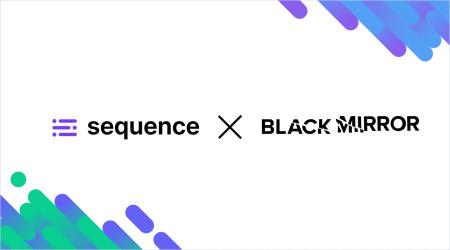
In partnership with KOR Protocol, Sequence and Msquared, Black Mirror's franchise has launched the $MIRROR token and a new web3 experience!

Web3 payment flows allow any app to embed onchain purchases and interactions in a way that feels natural for users. Learn more about them!
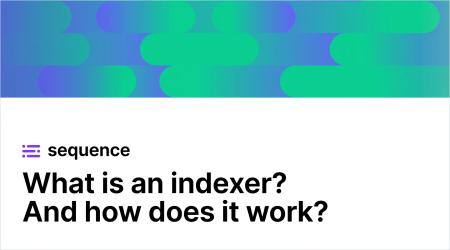
As more applications and protocols move onchain, indexers redefine how dev teams access, organize, and use blockchain data. Learn how!

